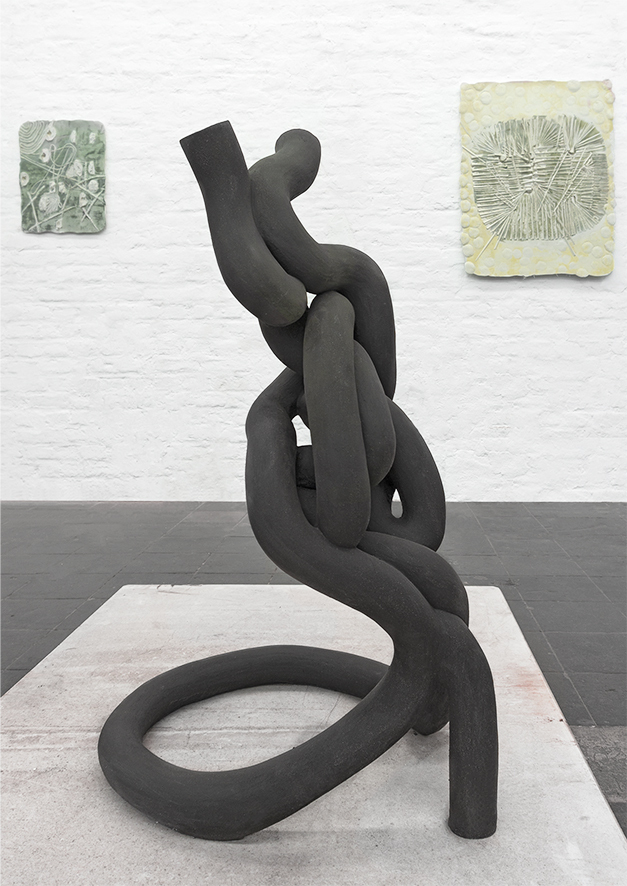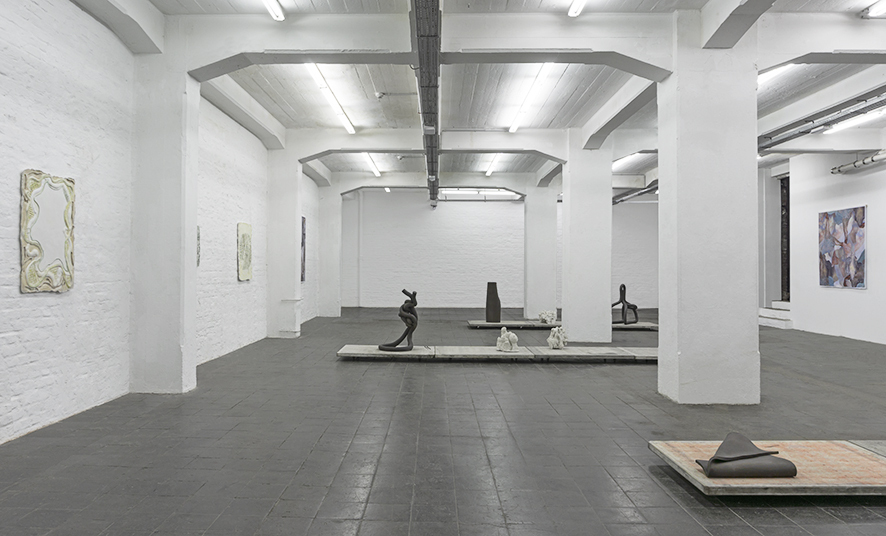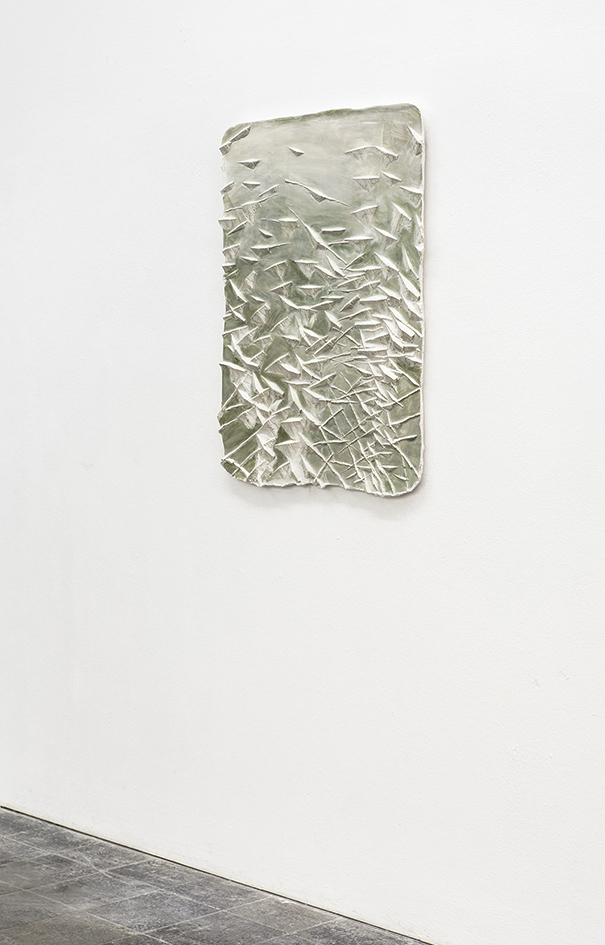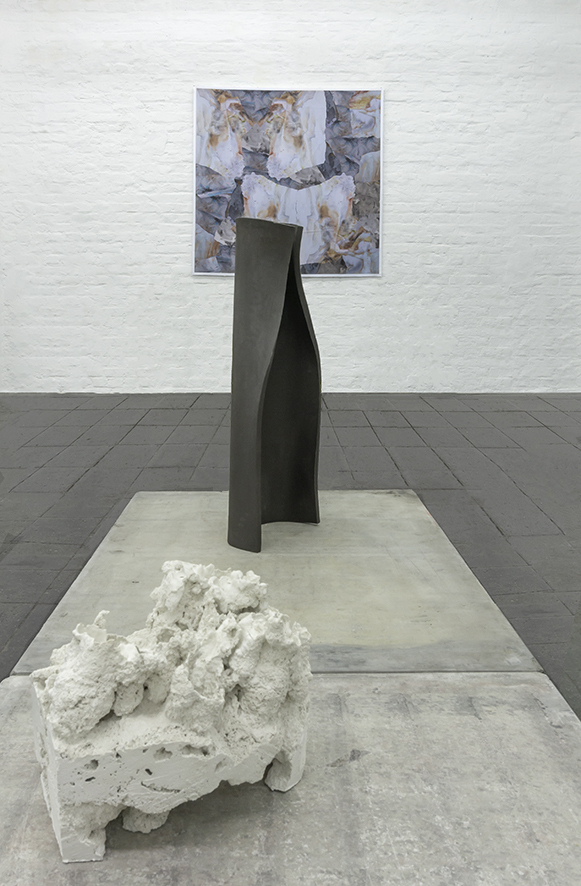Archive
2021
KubaParis
OTHER THOUGHTS




Location
KunstWerk KölnDate
16.11 –30.12.2021Curator
KunstWerk KölnPhotography
The artistText
Other thoughts
In her exhibition “Other thoughts”, Ruth Weigand weaves together different strands of her artistic work, which includes plaster and ceramic sculptures and wall pieces as well as photography and drawing. Her experimental working method is characterised by the principle of transformation, which serves as an instrument of discovery in the artistic investigation of spatial dimensions, temporality and materiality.
Her work is driven by the conviction that only a broken, non-linear perception can produce, complete and enhance the comprehension of the world in which we move.
Ruth Weigand places ceramic sculptures from 2021 at the centre of the exhibition. Using undivided strands of manganese clay, each 6.40 metres long, she forms graphic-like structures that explore their own flexibility. Entwined within themselves and bearing their own weight, they sound out the possibilities and limits of moulding. Ruth Weigand sees the sculptures as individual selected snapshots of an infinite movement. The technically and physically complex production process that is required to build open, seemingly light forms using the heavy, thick clay, demands an intensive interaction with the material. This working method is a form of appropriation and at the same time a reaction to the strenuous uncertainty of the Corona era, which Ruth Weigand consciously confronts, despite internal and external resistance, with productivity. The special appeal of these sculptures is that they appear to be simultaneously light and heavy, flexible and rigid.
The principle of transformation that links Ruth Weigand’s work is also to be found in the coral-like sculptures. Cavities impressed in the snow by parts of the body are cast in plaster. The seemingly empty space is transformed into solid material. Marks of both the body as well as of the structures that enclose and define the interstitial space are made visible as a result. The plaster’s interaction with the snow is imprinted on the surface of the sculptures. The choice of the transient initial material that is subject to constant change reflects on aspects of time and transience.
In an extremely time-limited moulding process, plaster reliefs are created that convey Ruth Weigand’s occupation with the idea of the fragmentary, of archaeological and geological finds. It gives the surfaces of the reliefs a partially textile quality; their formal language is similar to that of the ornament. The impression the forms make changes according to the lighting situation, so that the compositions may appear flatter and softer, more plastic and rich in contrast.
Large-format prints on fabric show photographed and greatly enlarged fragments of coloured plasterboards re-composited in photo montages. The individual elements repeat and seem to grow out beyond the bounds of the format. The outward appearance of the initial plaster material is enhanced by the fabric texture, while its spatiality is altered.
The artist